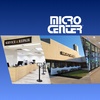
Third-year Harvard Law School (HLS) students MICHAEL HORWITZ and JENNIFER TRACY study between a foosball table and computer kiosks in HLS’s Harkness Commons. After fifty years of use, the space is slated to undergo major renovations.
Fifty years ago, architects and campus pundits used phrases like “dream come true” and “consistently good in design” to celebrate concrete, factory-like Harkness Commons, an opus of world-renowned modern architect Walter Gropius.
Now, the students, faculty and staff at Harvard Law School (HLS) who use the building employ words like “dreary,” “old” and “crazy” to describe the aging student center.
But even though HLS Dean Elena Kagan promised to spruce up Harkness Commons, restrictions on the landmark piece of architecture will likely make it difficult for construction crews to make major changes the so-called Hark, which currently houses the HLS cafeteria and functions as the primary social space at the law school.
“It’s dreary and it’s old,” Vice Dean for Physical Planning and HLS Professor Daniel Meltzer said. “We need to design something that better serves students needs.”
Renovations may start as early as this summer, but no official decision has been made.
“The plans for possible renovation are still in their preliminary stages and we are determining whether it is feasible to undertake a renovation,” Meltzer said.
The renovation plan is in its preliminary stage, but the Physical Planning Committee (PPC) would like to see better lighting, new and more comfortable furniture, and improved wall furnishings in The Hark.
Substantial physical renovation, however, is difficult given the building’s historic significance.
HLS student Molly M. Dunham, a member of PPC, said that altering the interior is difficult because there is a ramp designed by Gropius in the center of The Hark.
“And we can’t do anything to the outside of the building,” she added.
To address this problem, members of PPC have begun discussions with representatives of the Cambridge Historical Commission to determine what, if any, renovations are possible.
Currently, neon signs, antique wooden tables and a television decorate the cramped social space.
“The renovations will be primarily aesthetic,” said Dunham.
“They should add a functional bar. And restaurants. And an arcade,” quipped Michael Horwitz, another HLS third-year.
The space also suffers from a space crunch.
Read more in News
Mahan Unveils New Harvard-Yale Game Plan












